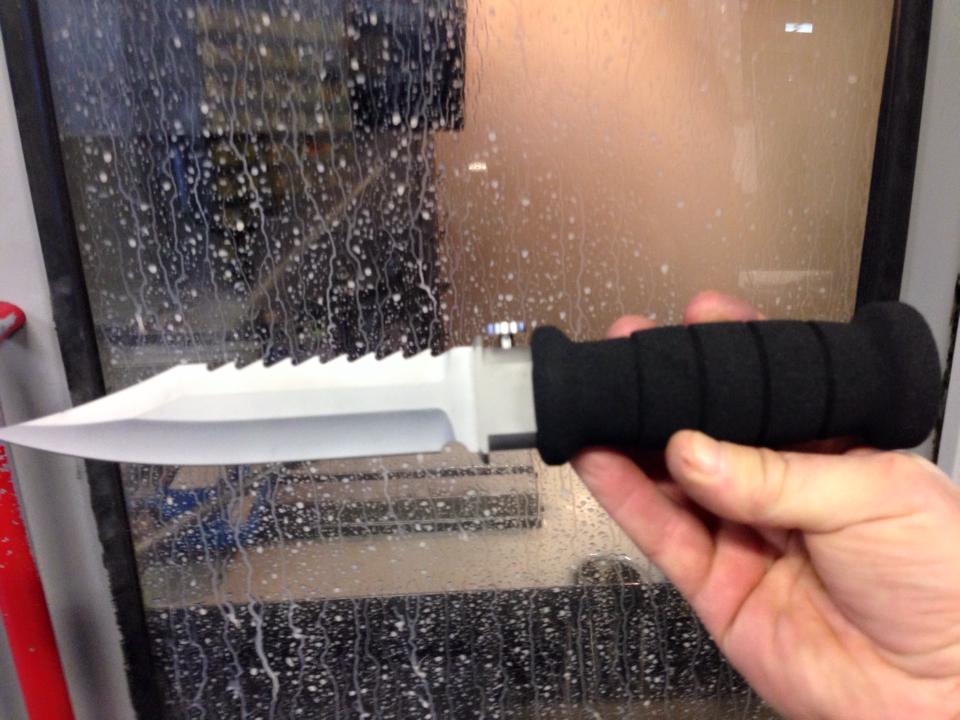Last updated on January 16th, 2024 at 09:30 am
Many people worry about their safety today. Whether you’re a hiker, outdoorsman, or security seeker, self-defense tools are essential. Wasp knives have become popular recently. Wasp knives—what are they?
This comprehensive guide will cover this unusual tool’s capabilities and how it can be utilised for self-defense. Let’s explore what makes a wasp knife an attractive personal protection alternative.
What Is a Wasp Knife?
Wasp knives cut and inject compressed gas into wounds. The knife handle holds compressed gas, usually CO2. When the knife strikes a target, a button or trigger releases gas through small vents near the blade. The wound’s pressure wave from compressed gas discharge might injure essential organs and tissues.
The Mechanism Behind a Wasp Knife

Let’s examine a wasp knife’s main parts to understand its mechanism:
Blade: Wasp knives have sharp, durable stainless steel blades. It penetrates several materials.
Compressed Gas Chamber: The handle holds CO2 or other injection gas. Leakage is prevented by sealing the compartment.
Vents: Small vents near the blade tip discharge compressed gas when actuated. These vents are optimised for pressure wave impact.
Button or Trigger: The button or trigger releases pressurised gas. It’s easy to use on the handle.
How Does a Wasp Knife Work?

The wasp knife cuts deeply. Pressing the button releases compressed gas. Gas ejected from the blade tip vents rapidly expands within the wound, causing a massive pressure wave. This pressure wave damages nearby tissues and organs, possibly incapacitating the victim.
Wasp knives are designed to inflict maximum harm and halt an attacker. Its deep wound and powerful pressure wave make it a powerful self-defense weapon.
The Advantages of a Wasp Knife

Potential to Deter Attackers: Wasp knives can repel attackers. Its reputation for causing extreme harm and trauma may deter attackers, increasing personal protection.
Compact and Portable: Wasp knives are tiny and lightweight, making them excellent for travellers. They fit in pockets, backpacks, and belts for easy access.
Versatility: Wasp knives can be used for more than just self-defense. Camping, trekking, and fishing require trustworthy cutting tools. In survival emergencies, it can inject gas to signal for help or create a fire.
Legal Considerations: Wasp knives may be illegal in several places. To comply with local laws and prevent legal issues, you must know how to own and utilise such instruments.
FAQs
Is carrying wasp knives legal?
Wasp knives are illegal in some places. To comply, you must study your local legislation.
Wasp knives kill?
Due to its deep wound and powerful pressure wave, a wasp knife can kill. Only use it for self-defense if you understand the risks.
Are wasp knives dangerous?
Wasp knives, like any tool, have risks. To avoid harm, use it appropriately, get training, and be careful.
Wasp knife maintenance—how?
Wasp knives need regular maintenance to last and operate well. To avoid rust and debris, clean the blade, check the gas chamber for leaks, and follow the manufacturer’s maintenance instructions.
Self-defense alternatives to wasp knives?
Pepper spray, stun guns, personal alarms, and self-defense lessons are alternatives to wasp knives. Choose a method that suits your comfort, skills, and local laws.
Wasp knives for sale?
Wasp knives depend on your locality and local laws. Some governments need age restrictions or permission to buy such tools. Consult local authorities or trusted vendors for more information.
Conclusion
In conclusion, a wasp knife may cut and inject pressurised gas, causing a tremendous pressure wave when it enters a target. Its shape and functionality make it appealing for self-defense instruments with increased stopping capability.
However, wasp knife use has legal, safety, and risk implications. Informed and competent people can decide if a wasp knife meets their security needs.
